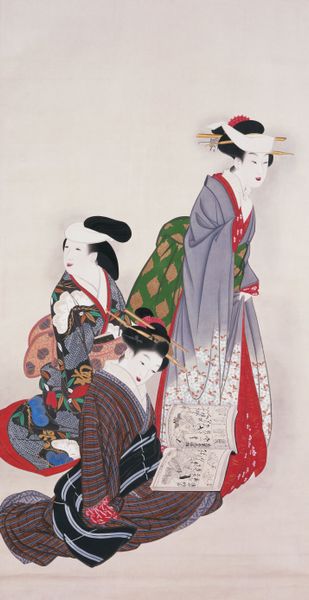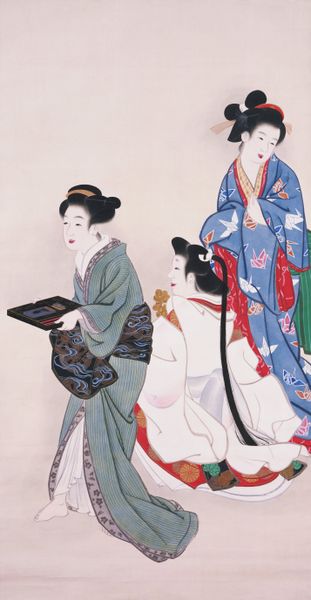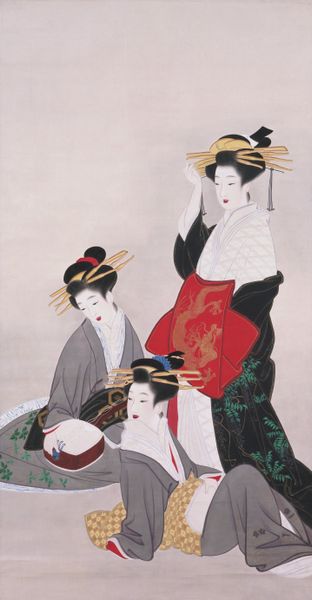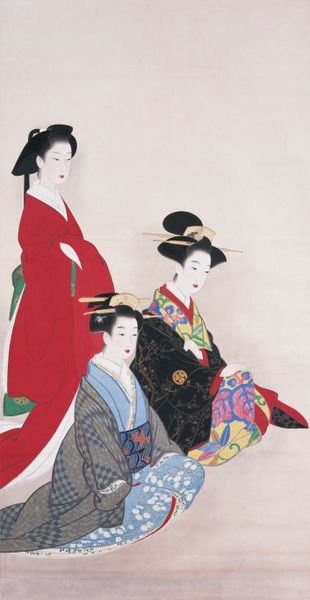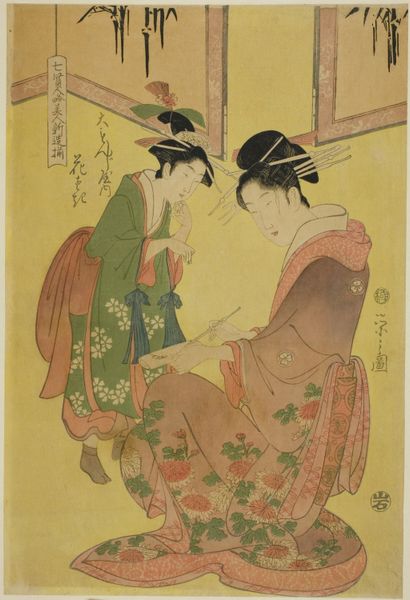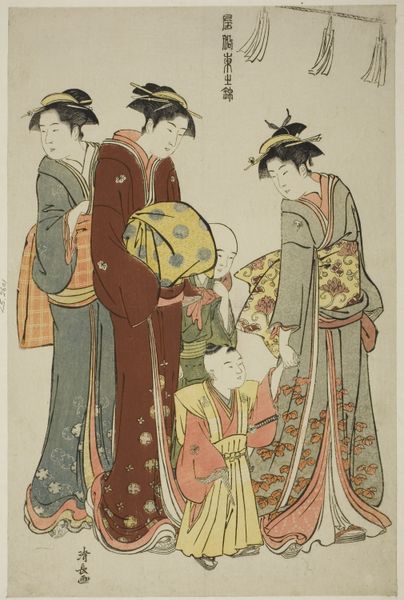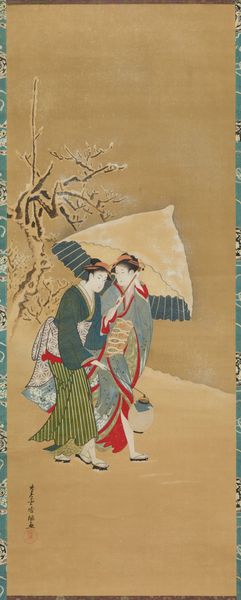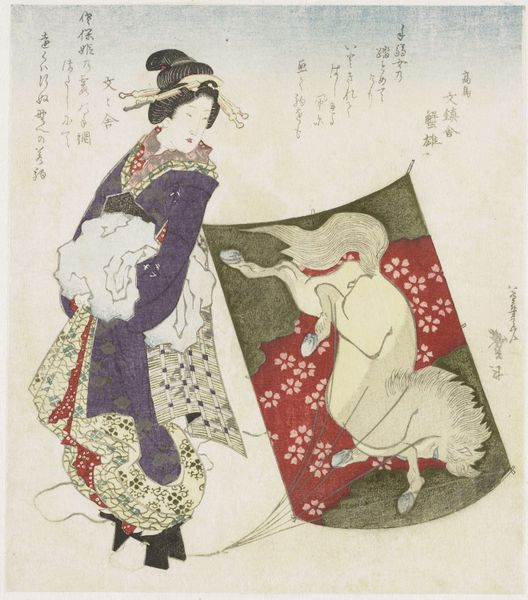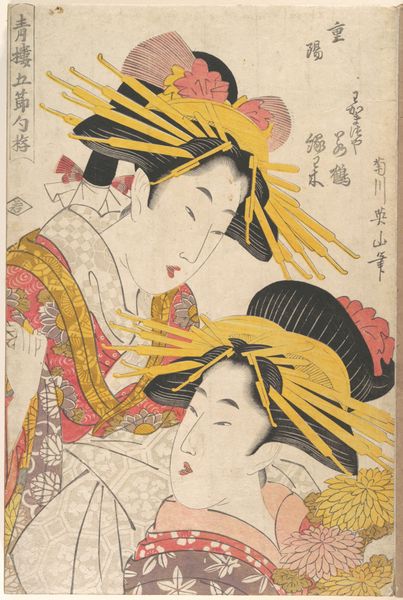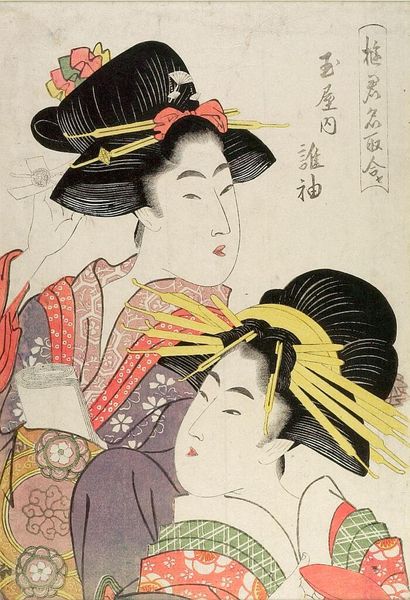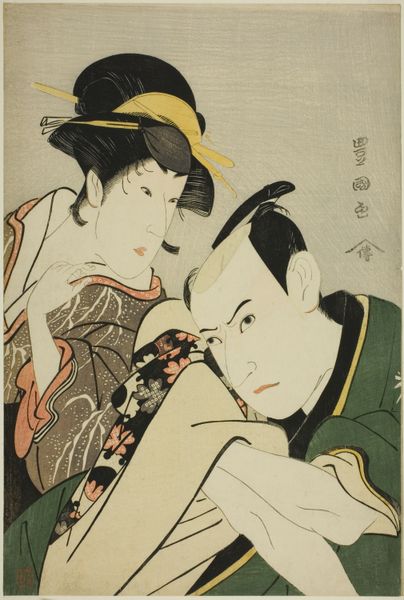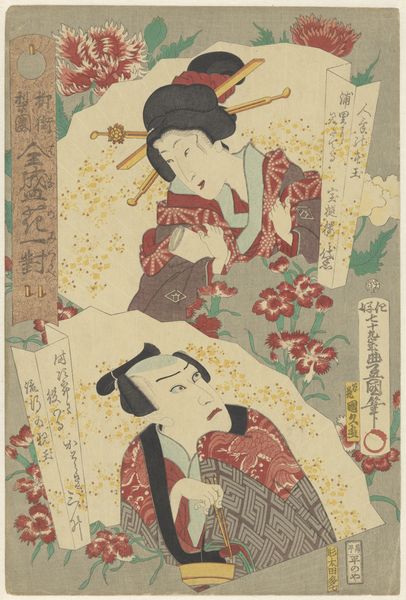
painting, paper, hanging-scroll, ink, color-on-paper
#
portrait
#
painting
#
asian-art
#
caricature
#
ukiyo-e
#
japan
#
paper
#
hanging-scroll
#
ink
#
color-on-paper
#
group-portraits
#
genre-painting
Dimensions: 70 1/4 × 36 5/8 in. (178.44 × 93.03 cm) (image)86 3/4 × 42 3/8 in. (220.35 × 107.63 cm) (mount)
Copyright: Public Domain
Editor: This hanging scroll, "Wives of Merchants," is attributed to Yamaguchi Soken and dates to around the 19th century. It's created with ink and color on paper. The figures almost feel like they're observing us, yet remain distant. What do you see in this piece beyond just a depiction of women? Curator: I see a nuanced portrayal of class and gender roles within the context of 19th-century Japan. Notice the distinct styles of dress and the almost caricatured features – particularly in the woman leaning forward. What do these stylistic choices say about how women, specifically merchants' wives, were perceived and portrayed? Are we meant to admire, critique, or perhaps both? Editor: It's interesting you point out the caricature element. It gives the piece an edge, moving it beyond a simple portrait. Maybe there's some social commentary woven in? Curator: Exactly. We need to consider the positionality of the artist. Was Soken part of the elite class or more aligned with the merchant class? His perspective significantly shapes the narrative. Consider how ukiyo-e art, traditionally focused on courtesans and actors, expands here to include merchants' wives, highlighting their growing social and economic influence. Editor: That's a great point. The rise of the merchant class would have definitely shifted social dynamics. It sounds like the artwork challenges the status quo by giving a place to women from outside of traditional art subjects, even if a caricature. Curator: Precisely! This piece is a valuable text that allows us to explore intersectional themes around gender, class, and social mobility in the Edo period. Editor: I’m beginning to think that there is much more at stake here than simply aesthetic beauty! This has been really eye-opening. Curator: Indeed, looking beyond the surface allows us to really understand and consider how social shifts shape artistic representation.
Comments
minneapolisinstituteofart about 2 years ago
⋮
In the Edo period, the material and design of kimono were strictly regulated by the government along class lines, such that class and occupation were identifiable by costumes and hairstyles. Here (from left to right) are ladies of the warrior class, wives of merchants, young maidens, working girls, and women in the demimonde. Soken’s extraordinary brush control and use of pigments can be seen in the delicate hairlines and the texture of complexions and make-up. The son of a kimono merchant, he depicted magnificent kimono with delicate folds suggesting the body under the fabric.
Join the conversation
Join millions of artists and users on Artera today and experience the ultimate creative platform.
